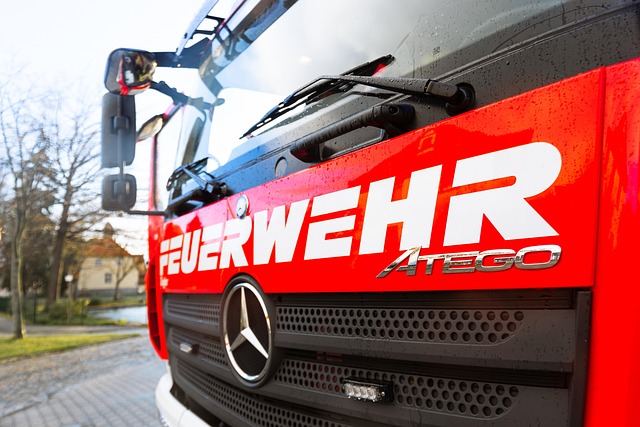Registering a car in California involves understanding specific requirements and gathering essential documents. This comprehensive guide walks you through the entire process, from meeting the necessary conditions to the step-by-step registration procedure at the DMV. We’ll also cover what to expect during the crucial dvm vin verification and post-registration tasks. Ensure a smooth transition by following these key steps and considerations tailored for California residents.
- Understand the Requirements for Car Registration in California
- Gather Necessary Documents for DMV Vin Verification
- The Step-by-Step Process of Registering Your Vehicle
- What to Expect During the DMV Visit for VIN Verification
- Post-Registration Tasks and Important Considerations
Understand the Requirements for Car Registration in California

Before registering your car in California, it’s crucial to understand the requirements set forth by the Department of Motor Vehicles (DMV). One of the key steps is ensuring your vehicle meets all safety and emission standards. This process often involves a DMV vin verification, which checks the vehicle identification number (VIN) against the manufacturer’s records to confirm its authenticity and compliance.
Additionally, you’ll need proper documentation, including proof of ownership, current insurance, and sometimes, a complete mobile vin inspection or mobile vin verifier to ensure all systems are in order. These mobile vin verification services can streamline the process by providing instant results, making it easier for both new car owners and those transferring titles to meet California’s registration criteria efficiently.
Gather Necessary Documents for DMV Vin Verification

To register your car in California, you’ll need to undergo a DMV VIN verification process. First, gather all necessary documents, including your vehicle’s registration certificate from the previous state, proof of insurance, and a valid driver’s license. The Department of Motor Vehicles (DMV) will also require a completed Vehicle Registration Application form.
Additionally, ensure you have your car’s Vehicle Identification Number (VIN) readily available. This unique 17-character code can be found on the vehicle’s certificate of title or on the driver’s side door jamb. For convenience, consider using a mobile vin inspection service or a mobile vin verifier to streamline this step and avoid any potential delays during your DMV visit.
The Step-by-Step Process of Registering Your Vehicle

Registering a car in California involves several straightforward steps. Begin by gathering all necessary documents such as your vehicle’s registration from the previous state, proof of insurance, and a completed Title Application form (Form DVT-197). Next, visit a California Department of Motor Vehicles (DMV) office or use their online services to initiate the registration process. The DMV will conduct a Vehicle Identification Number (VIN) verification to ensure the vehicle’s identity and history. This step is crucial in preventing fraud and ensuring compliance with state regulations.
After successful VIN verification, you’ll be prompted to pay the registration fees. These fees vary based on your vehicle’s type and age. Once paid, the DMV will issue a new registration certificate, typically valid for 3 or 4 years. For added convenience, consider utilizing a mobile vin inspection service, which can perform the initial VIN check remotely, saving you a trip to the DMV. Alternatively, a professional vin inspector can handle this process quickly and accurately.
What to Expect During the DMV Visit for VIN Verification

During your visit to the DMV for VIN (Vehicle Identification Number) verification, expect a straightforward process designed to ensure your car’s authenticity and safety. You’ll typically start by presenting necessary documents, including your driver’s license, proof of insurance, and registration documents from your previous state if applicable. An inspector will then visually inspect your vehicle, checking for any signs of tampering or damage. This step is crucial as it helps identify potential issues that could impact the car’s safety and performance.
The core of the process involves using a mobile vin verifier or conducting a manual VIN check on the car’s frame, engine, and other critical components. A mobile vin inspection allows for convenience, often taking less than 30 minutes to complete. This method verifies the vehicle’s history, ensuring it hasn’t been reported stolen, has no outstanding recalls, and meets all necessary safety standards. By combining these steps, the DMV ensures that your car is ready to be registered and safely operated on California’s roads.
Post-Registration Tasks and Important Considerations

After successfully registering your vehicle in California, there are several crucial post-registration tasks to complete. One of the essential steps is to obtain a Vehicle Identification Number (VIN) verification from the Department of Motor Vehicles (DMV). This process involves confirming the VIN on your car’s registration documents matches the one listed in the DMV’s system, ensuring accuracy and preventing fraud. You can do this through a mobile vin inspection or by visiting a local DMV office for manual verification.
Additionally, remember to update your vehicle insurance details with the new California registration information. Keep your registration and insurance papers in an easily accessible place, as you may need them for future reference or when dealing with law enforcement. Regularly checking and renewing your registration within the stipulated time frame is vital to avoid penalties and legal issues.
Registering a car in California involves understanding the state’s requirements, gathering essential documents, and successfully completing the DMV vin verification process. By adhering to these steps and being prepared with all necessary paperwork, you can ensure a smooth transition into becoming a California vehicle owner. Remember, accurate and timely registration is crucial for roadworthiness and legal compliance.



